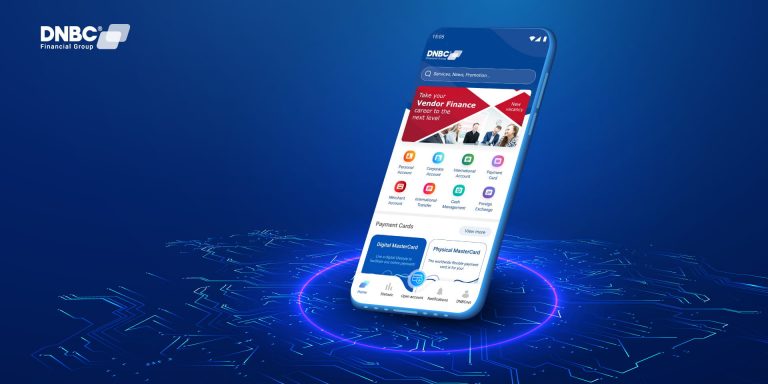The question “What is ACH transfer” makes a lot of people confused because it seems strange to them when transferring money.
ACH transfers have become popular these days. ACH transfers have more than 29 billion transactions and $72 trillion in payments in 2021. In fact, several businesses and customers don’t fully understand ACH transfers.
In this article by DNBC’s experts, we’ll explain more about ACH transfer, 2 types of ACH transfers, and instruct some basic steps on how to set up an ACH transfer in a business account.
What is an ACH transfer in banking?
ACH transfer is a popular kind of electronic bank transfers and applies for direct deposits and automated bill payments.
Unveil the question “what is ACH transfer” in transactions
An ACH transfer is a kind of payment made among bank accounts in terms of ACH (Automated-Clearing-House) network system. The ACH network is regulated by National Automated Clearing House Association (NACHA).
NACHA requires strict connection to transaction protocols. If there is a failure to supply the necessary ACH instructions, this can result in a decline in electronic payments.
ACH transfers are used for B2B, direct debit transactions and mail or telephone orders. ACH transfers can take 3-4 business days to be done.
ACH transfers can apply in the person-to-person payments, external money transfers, bill payments and direct deposits from employers and government benefit programs.
What are the benefits of ACH transfers?
ACH transfers offer several advantages for a business at any size.
If compared with other payment methods, ACH payments are eco-friendly, convenient, and easy to track, too. There are some advantages you need to know.
Lower costs
ACH transfers have cheaper transaction fees than other electronic payment forms, like credit card and debit card. Processing fees are better than virtual payment platforms like PayPal.
Security
ACH requires verification via a processing center. ACH verification will provide a history of a customer’s checking account: bounced checks or bogus payments.
Convenience
With automated payments, a business will receive money on time and doesn’t worry about the lengthy step of harassing customers on missed payments.
No burden is shouldered on the consumers. There’s no need to remember to mail physical checks which is time-consuming and forgettable.
Processing time
A physical paper check takes many steps to be done. It can take some days to get to a business. If there is any delay on the delivery, this can result in missed payments.
On the contrary, ACH payments are processed as a high priority, which can be placed on a “hold” process while your bank reviews the check’s validity.
Global acceptance
There is a decline in payment from 40 billion transactions in 2000 to 20 billion ones in 2018.
On the other hand, there is an annual growth rate increase to 17.4% in 2021 with ACH transactions.
What are the drawbacks of ACH transfers?
Before getting started with your business for ACH transfers, you should be aware of some slight disadvantages as follows:
Associated fees
Unluckily, ACH transfers are not free to businesses. NACHA charges an annual fee and a per-transaction fee for joining their network.
The annual fee is about $264 and the per-transaction fee is about $ .000185.
Processing time
Although ACH has a fast-processing time advantage over traditional checks, this doesn’t mean ACH transfers take place at once.
ACH transactions can take up to three days, depending on the amount and the time your payment is made.
In general, ACH transfers are faster, more reliable, and less dependent on external elements for delivery.
Amount limits
ACH transactions will be imposed a daily, weekly, or monthly limit by some banks. Individuals can be restricted from transferring money using ACH.
How to set up an ACH transfer?
After you choose ACH transfer as your transaction solution, it’s time to set up this with 4 simple steps.
Step 1: Gather the requested information to complete an ACH Transfer
To make a transfer, you need to give your full name, your account number, account type, and transaction amount.
Step 2: Choose between ACH Debit and ACH Credit
To make the right payment, you’ll need to understand ACH debit and ACH credit.
An ACH credit uses the bill pay services. You give authorization to your financial provider to send a payment to a payee, such as a car loan servicer or a utility company. Your bank account details are kept with your financial institution and aren’t sent to the payee.
An ACH debit needs to establish the transaction with the payee. You will submit your payment details (account and routing numbers) to the payee. Thus, this payment form can entail a bigger risk than ACH credit.
Both ACH debit and ACH credit have cost-effectiveness and convenience.
When you fully understand 2 kinds of payment, it’s time to make digital payments with steps to complete an ACH transfer.
Step 3: Execute the ACH transfer
First, You need to fill in some paperwork, which can be e-paperwork, although some financial providers use hard-copy forms. Anyway, here are things you should do:
1. Link accounts. This essential step can’t be skipped. To finish this step, you’ll need to provide the ACH instructions to the financial institutions.
2. Determine if your transaction will be a credit or debit to the account.
3. Enter the payment amount.
4. Choose the payment date. Most financial institutions will let you schedule a payment.
Step 4: Be ready to accept ACH payments from customers
If running a business, you can choose to accept ACH payments from customers. To do this, you need to sign up with the payment processing institutions. They will provide all the necessary information that business owners need to do electronic fund transfers.
About DNBC Financial Group
Beginning the journey in 2017, DNBC Financial Group is a professional financial institution that helps individuals as well as businesses to make overseas transactions conveniently and cost-effectively.
We are now present in Canada, the United States of America, the European Union, Hong Kong, Singapore with overseas transactions.
DNBC Financial Group is your trusted provider in international money transfer
- Get 100% free 1-on-1 support
- 100% free account opening
- Seamless onboarding process
Or please contact DNBC
Email: [email protected]
Phone Number:
- +65 6572 8885 (Office)
- +1 604 227 7007 (Hotline Canada)
- +65 8442 3474 (WhatsApp)


 DNBC Team
DNBC Team







